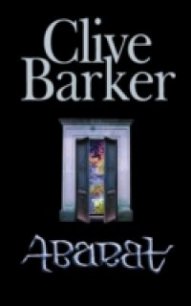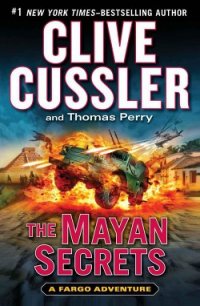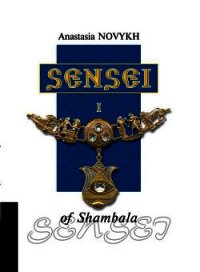Abarat: The First Book of Hours - Barker Clive (книги без регистрации txt) 📗
Then her toe caught some object so that it skipped ahead of her through the grass. Just a stone, surely. Nevertheless, she bent down to take a closer look, and to her surprise she saw that it was not a stone at all, but a shell. It was large too: about the size of her balled fist, and there were a number of short spikes on it. It wasn’t, she knew, a snail’s shell. For one thing it was too big, and she had never seen a snail’s shell with spikes. No, this was a sea shell, and it was clearly old. Its colors had faded, but she could still see an elaborate pattern upon it: a design that followed its diminishing spiral.
She turned it over, brushed what looked suspiciously like sand out of its crevice, and put it to her ear. It was a trick her grandfather had first taught her, listening to the sea in a shell. And though she knew it was just an illusion—the subtle reverberations of the air in the shell’s interior—she was still half persuaded by it; half certain she heard the sound of waves, as if the shell still had some memory of its life in the ocean.
She listened. There it was.
But what was a seashell doing out here?
Had somebody dropped it while walking here? That seemed highly unlikely. Who went walking with seashells in their pocket?
She looked down, wondering if anything else had been dropped in the vicinity. To her surprise, the answer was yes: there were a number of odd items scattered under her feet. More shells, for one thing, dozens of them. No, hundreds; some small, a few even larger than the one she’d picked up. Most were cracked or broken, but some were still intact, their shapes and designs more beautiful, more bizarre, than anything she’d ever seen in a book.
And there was more besides, a lot more. As she studied the ground, her eyes becoming accustomed to picking out curiosities, the curiosities multiplied. There were pieces of wood scattered among the shells, most smoothed into little abstract sculptures by the pale, freckled sand that was mingled with the dark Minnesota dirt. As she bent to pick one of the sculptures up, she saw that there was glass here too: countless fragments—green, blue and white—turned into smoky jewels. She picked up three or four and examined them in the palm of her hand, walking a little way as she did so.
There were more mysteries underfoot with every step she took. A large fish—its flesh pecked away by birds, and the remains baked by the sun. And even a piece of pottery, on which a fragment of an exquisite design remained: a blue figure staring at her with almost hypnotic intensity.
Fascinated by all this, she paused to examine her finds more closely. As she did so, she caught a movement in the long grass out of the corner of her eye. She dropped down onto her haunches, below the level of the tallest grass stalks, and there she stayed, suddenly and unaccountably nervous.
She brushed the last of the sand off her fingers and watched for whatever had moved to move again.
A hard gust of wind came through the grass, making it hiss as the stalks rubbed against one another.
After perhaps a minute, during which the only motion was the bending of the grass, she decided to chance standing up.
As she did so the thing she’d seen moving chose precisely the same moment to also stand upright, so that the pair of them, Candy and the stranger, rose like two swimmers emerging from a shallow sea.
Candy let out a yelp of shock at the sight of the stranger. And then, once the shock had worn off, she started to laugh. The man—whoever he was—was wearing some kind of Halloween mask, or so it seemed. What other explanation could there be for his freakish appearance? His left eye was round and wild, while his right was narrow and sly, and his mouth, framed by a black mustache and beard, was downturned in misery.
But none of this was as odd as what sprouted from the top of his head. There were large downy ears, and above them two enormous antlers, which would have resembled those of a stag except that there were seven heads (four on the left horn, three on the right) growing from them. Heads with eyes, noses and mouths.
They weren’t, she realized now, static, nor were they made of rubber and papier-mache. In short, it was not a mask the man was wearing. These heads sprouting from the antlers were alive, and they were all staring at Candy the way their owner was staring at her: eight pairs of eyes all studying her with the same manic intensity.
She was speechless. But they were not. After a moment of silence the heads erupted into wild chatter, their manner highly agitated. Candy had no doubt about the subject of conversation. One minute the heads were looking at her, then they were facing one another, their volume rising as they attempted to out-talk one another.
The only mouth that wasn’t moving was that of the man himself. He simply studied Candy, his wild and sly expression slowly becoming one of tentative enquiry.
Finally, he decided to approach her. Candy let out a little gasp of fear, and in response he raised his long-fingered hands as though to keep her from running away. The heads, meanwhile, were still chattering to one another.
“Be quiet!” he ordered them. “You’re frightening the lady!”
All but one of the heads (the middle of the two on his right horn, a round-faced, sour individual) responded to his order. But this one kept talking.
“Keep your distance from her, John Mischief,” the head advised its big brother. “She may look harmless, but you can’t trust them. Any of them.”
“I said hush up, John Serpent,” the man said. “And I mean it.”
The head made a face and muttered something under its breath. But it finally stopped talking.
“What’s your name?” John Mischief asked Candy.
“Me?” Candy said, as though there was anybody else in the vicinity to whom the question might be directed.
“Oh Lordy Lou!” another of the heads remarked. “Yes, you, girl.”
“Be polite, John Sallow,” John Mischief said, reaching up (without taking his eyes off Candy) and lightly slapping the short-tempered head for its offense.
Then, having hushed his companion, John Mischief said: “I do apologize for my brother, lady.”
Then—of all things—he bowed to her.
It was not a deep bow. But there was something about the simple courtesy of the gesture that completely won Candy over. So what if John Mischief had seven extra heads; he’d bowed to her and called her lady. Nobody had ever done that to her before.
She smiled with improbable delight.
And the impish man called John Mischief, along with five of his seven siblings, smiled back.
“Please,” he said. “I don’t wish to alarm you, lady. Believe me, that is the very last thing I wish to do. But there is somebody in this vicinity by the name of Shape.”
“Mendelson Shape,” the smallest of the heads said.
“As John Moot says: Mendelson Shape.”
Before Candy could deal with any more information she needed a question answered. So she asked it.
“Are you all called John?” she said.
“Oh yes,” said Mischief. “Tell her, brothers, left to right. Tell her what we are called.”
So they did.
“John Fillet.”
“John Sallow.”
“John Moot.”
“John Drowze.”
“John Pluckitt.”
“John Serpent.”
“John Slop.”
“And I’m the head brother,” the eighth wonder replied. “John Mischief.”
“Yes, I heard that part. I’m Candy Quackenbush.”
“I am extremely pleased to make your acquaintance,” John Mischief said.
He sounded completely sincere in this, and with good reason. To judge by his appearance, things had not gone well for him—or them—of late.
Mischief’s striped blue shirt was full of holes and there were stains on his loosely knotted tie, which were either food or blood; she guessed the latter. Then there was his smell. He was less than sweet, to say the least. His shirt clung to his chest, soaked with pungent sweat.



